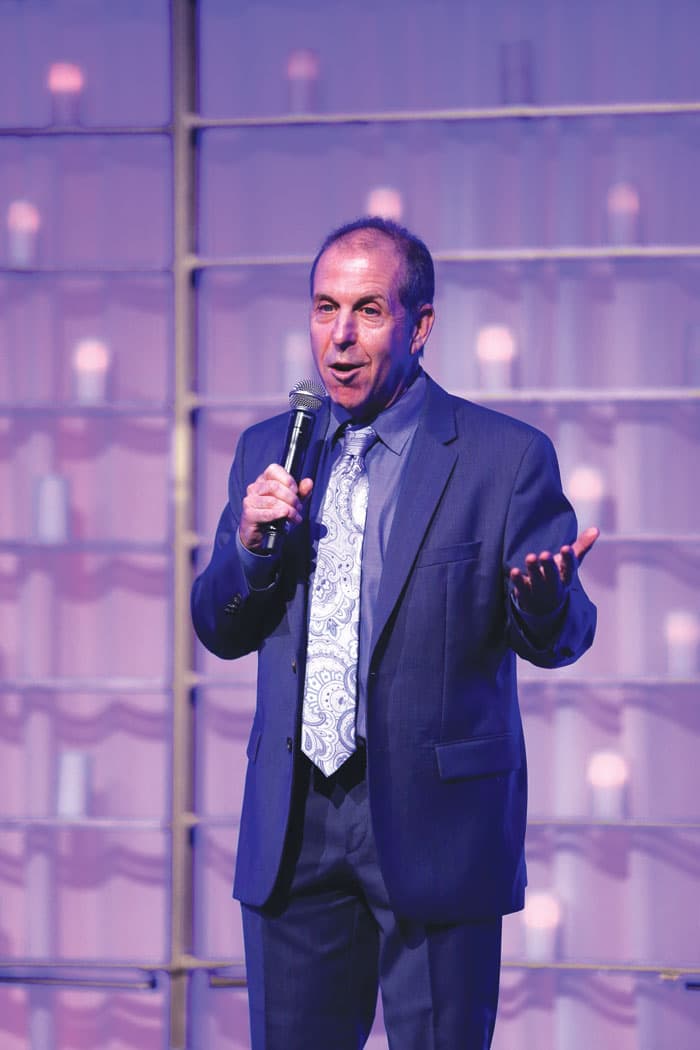
The small cardboard boxes that lined the top of his office credenza said it all. Jay Sanderson, president and CEO of the Jewish Federation of Greater Los Angeles, had started the task of methodically packing the numerous memorabilia he collected throughout his career.
“Going through all these items brings back memories,” he said. “I just came across a handwritten note from then Prime Minister of Israel Benjamin Netanyahu after we had lunch many years ago.”
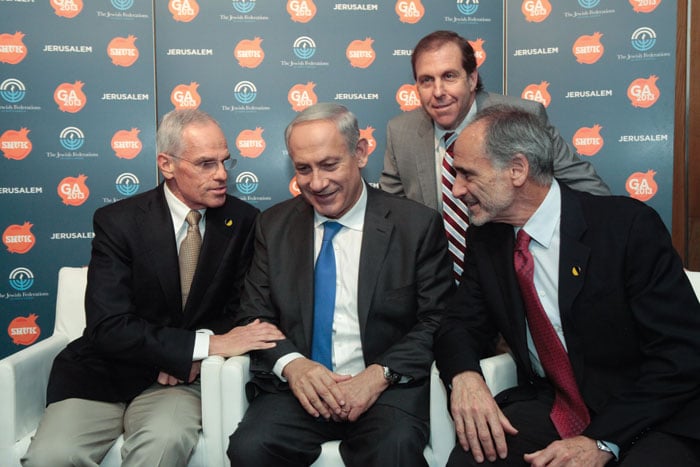
After 12 years leading the Federation, Sanderson, 64, will be handing over the proverbial torch to Rabbi Noah Farkas on January 1, 2022. Sanderson is ready to start a new chapter of his life, a chapter that he looks forward to writing.
“From the day I took this job, I told the board the exact day I would leave,” he said.
“Some people stay in jobs too long. This is a 24/7 job. I didn’t think I could or should be here more than 12 years.” — Jay Sanderson
When asked how he could have known that his tenure would last precisely 12 years, he answered, “Some people stay in jobs too long. This is a 24/7 job. I didn’t think I could or should be here more than 12 years. I felt that would be just the right amount of time for me to accomplish what I wanted and then for new leadership to take over.”
On October 17, more than 500 people, including rabbis from all denominations, political leaders, Federation partners, staff and friends, gathered at Stephen Wise Temple for dinner and to express gratitude to Sanderson. The evening benefitted the Federation’s young adult engagement and leadership development programming and raised $1.7 million, but is expected to grow to $2 million, a Federation spokesperson said.
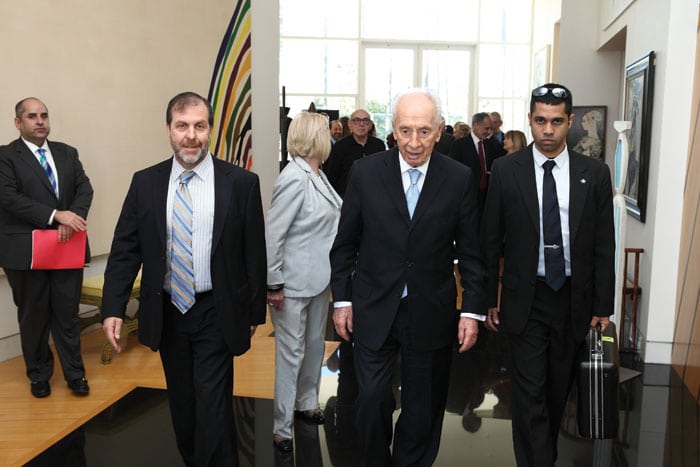
Sanderson is one of the busiest and most powerful Jewish leaders in L.A., throughout the country and in Israel. But his rise to the top of Jewish communal leadership wasn’t fast, easy or painless.
He was born in Boston to parents Herbert and Rhoda Sanderson and lived in the suburb of Chelsea, Mass. “When my mother was pregnant, the doctors didn’t know she was having twins,” Sanderson said. “As a result, my twin brother Jeffrey was oxygen deprived and born developmentally disabled.”
Then, when Sanderson was five, his father died suddenly of a heart attack at age 42. He, his mother Rhoda and Jeffrey moved to Salem, Mass., where he experienced a fair share of antisemitism. “We had no money, and I had no Jewish friends,” Sanderson said. “When I was around 13, two older kids buried me alive in the back of the Rainbow Terrace Housing Project where we lived. I screamed and screamed until another kid heard me and saved my life. I knew they did that because I was Jewish.”
In 1972, a rabbi in his community arranged for him to visit Israel through The Jewish Agency. He was just 14, traveling with kids who were a couple of years older. Little did he know that the trip would change his life.
“Four of us were selected to have brunch on a kibbutz with David Ben-Gurion, and I was one of them,” he said. “When we finished, as I got up to leave, I felt a hand on my shoulder. It was Ben-Gurion. He turned me around and said, ‘Make me a promise. Protect my people. Protect my country.’ That was the moment I became a Zionist.”
It takes only a couple of minutes chatting with Sanderson to see he truly is a born storyteller. His love of stories led him to study journalism and then theatre at Syracuse University, where he earned a B.S. degree in film and a minor in theatre.

“I wanted to be a writer, and where better to write than Los Angeles?” Sanderson said.
In 1980, he drove alone cross-country to L.A. in his 1967 Chevy Malibu to take a job at 20th Century Fox. He worked as a script consultant on one movie and then immediately was laid off, the victim of an actors strike. While he remained enamored with living in L.A., the movie capital of the world, and had lots of fun, he wasn’t pursuing his passion for writing. He had writers’ block and was running out of money.
His luck changed when he was on the Venice boardwalk one day.
“I saw a woman sitting on the steps of a building crying,” Sanderson said. “She was an ex-addict running a drug rehabilitation program called Tuum Est (Latin for “It’s up to you”). She had just been given notice that she had to renovate the building, or they would be out of business. I had zero experience renovating buildings or in drug rehabilitation, but I said I would help her.”
He talked his way into a job as the director of development of the rehab, which eventually became Phoenix House. “The next thing I know, I’m running the whole program — the largest residential drug rehabilitation program west of the Mississippi,” Sanderson said.
The added benefit of working there was meeting his future wife Laura, who was interning for her licensure in psychology. They were engaged three weeks after they met.
Running the drug program gave Sanderson experience not only in social services, but also in fundraising and forging partnerships, unique skills required for institutional management. Laura introduced Sanderson to Camp Alonim on the Brandeis-Bardin campus that she frequented. It was also where the two married.
As fate would have it, it was through Brandeis-Bardin that Sanderson met Larry Weinberg, a founder of AIPAC, a major real estate developer and philanthropist. Weinberg knew Sanderson had experience in writing and fundraising and was committed to the Jewish community. They quickly bonded.
“Larry then comes to me with a couple of people and [says], ‘We have this thing. We believe there should be a Jewish Television Network (JTN), there really is nothing here but an idea. You have all this media, fundraising and Jewish community experience. Any interest?’ I knew I had to get back to where I started – back to writing,” Sanderson said. “It was television and I was a writer. So I said yes. But I had one condition. I said if there’s nothing here, let me build it like I want. He agreed.”
Sanderson soon learned that building JTN was harder than he thought. It was in debt to a cable company, and with multiple cable television stations in every market, Sanderson found himself flying around the country, convincing cable stations to air JTN shows.
“I immediately realized that we Jews spend an awful lot of time talking to ourselves. If you’re an engaged Jew, and you watch a Jewish program, what have you accomplished?” Sanderson asked rhetorically. “I then realized I had to turn JTN into a production company and get Jewish programs to the mass market.”
He did just that. As a production company, JTN became a major partner with PBS, producing the biggest, most expensive Jewish television series ever produced, “The Jewish Americans.” Sanderson proudly said that at least one hour of “The Jewish Americans” has been watched by at least 35 million people and nominated for numerous awards.
Then something amazing happened: the internet. That led Sanderson to come up with the idea of creating a Jewish internet channel. He built a prominent board of directors, garnered investors and sold the idea to major internet players such as America Online (AOL). He raised millions of dollars to launch this idea that had never been done before. Things were looking good until the internet bubble burst, and Bernie Madoff’s scheme was discovered.
“I was an internet millionaire for about 30 seconds,” Sanderson said with a chuckle. “Investors pulled out. Everything was falling apart.”
That’s when fate entered the picture.
“I was driving from my home in Encino to work through the canyon and at around Mulholland Drive, my cell phone rang,” he said.
Calling was the head of an executive search firm looking for a replacement for then-Jewish Federation of LA president and CEO John Fishel. “He told me they were looking for someone ‘out of the box’ and were simply calling to ask me if I had any ideas,” Sanderson said. “When he posed the question, the words that I never thought I would utter fell out of my mouth: ‘What about me?’ There was the longest pregnant pause I’ve ever experienced. I didn’t know if we had lost the phone connection or what. His reply was ‘Are you serious?’”
“They were looking at a who’s who of people all over the country … I never thought I would actually get the job.”— Jay Sanderson
Sanderson admitted he wasn’t thrilled with the grueling search process, which lasted nine months. “They were looking at a who’s who of people all over the country,” he said. “I never thought I would actually get the job.”
Then, of course, he got the job.
While speaking with the many people who have worked with and for Sanderson, similar descriptions emerge. Disruptor, a word which Sanderson wears as a badge of honor, is often mentioned. Less philosophically, few can resist describing his work style as strong, direct and unwavering. But many partners and colleagues are quick to point out that over the years, he has softened his approach. They say he welcomes new ideas and is always willing to listen, even if he doesn’t particularly like the idea. But many say he usually finds a way to make it work.
In speaking with people who know him well, it is clear that his professional relationships often become personal friendships. “Jay is a very dear and treasured friend of my entire family, my five children, their spouses who are married, my husband and me,” Julie Platt, past chair of the Federation board and national campaign chair of the Jewish Federations of North America, said. “He is our friend beyond being our professional guide. He has responded to challenges as our friend within my family as any good friend would do.”
Rachel Moore, president and CEO of The Harry and Jeanette Weinberg Foundation, which has funded many Federation projects and initiatives, said, “Jay is not afraid to speak his mind and show courage in difficult moments to advance the agenda for the Jewish community.”
Marvin Schotland, president and CEO of the Jewish Community Foundation of Los Angeles, who has worked with Sanderson for more than 30 years, added, “You can always count on Jay to be brutally honest with you. He’s not afraid to take chances [and] he’s not afraid of what people think about him. You get the straight scoop from Jay, whether you like it or not. Jay thinks he is right all of the time. He’s not, but he’s right most of the time.”
The fact that Sanderson threw his hat in the ring for the Federation job is somewhat curious. He said that at first he wasn’t sure he even wanted the job. He noted that prior to joining the organization, he didn’t see the L.A. Federation structure as effective. “It was challenging to have a lot of accountability or transparency in an umbrella of beneficiary agencies,” he said.
When he started, Sanderson’s assessment of the institution proved to be on target. The generation of potential donors Sanderson was dealt asked “good questions,” he said. “They asked, ‘Why should I give to the Federation when I can give directly to an agency that does the work?’”
From the very beginning, the new president and CEO said he knew the Federation needed a transformation.
“At my first all-staff meeting I said, ‘I know people are unhappy here. I also know people are afraid or don’t like change. You might prefer being unhappy [with] change, but I promise you I am not going to be creating a change process, but a transformation process. I hope you stick with it. I know everybody will feel better, the place will be more effective, we’ll raise more money and the community will appreciate us more.’”
With 146 Jewish Federations stretched across the American landscape, Sanderson explained that for some Jewish Federations, the traditional model still works. He cited Chicago and Pittsburgh as examples where Jewish communities are more centralized. In those cases, and others, the Federations have a hand in most programs and projects that serve their Jewish communities.
But L.A. is different, and Sanderson knew it from day one.
“The Los Angeles Jewish community not only covers the largest geography of any Jewish Federation in America, it also is the most dynamic and challenging Jewish community in the diaspora,” he said. “We have the largest Israeli population outside of Israel. We have the largest Persian Jewish population in the world. We have the largest percentage of millennials. We are home to many large synagogues and strong Jewish institutions with high visibility that do their own fundraising. In many cases, people don’t even give to us. And I’m OK with that, because it helps the Jewish community. But if you give a million dollars to a secular museum and nothing to the Jewish community, we need to talk about that.”
“The Los Angeles Jewish community not only covers the largest geography of any Jewish Federation in America, it also is the most dynamic and challenging Jewish community in the diaspora.” — Jay Sanderson
When Sanderson arrived at the Federation, it had a budget of $42 million and 174 employees. Today, the budget tops $55 million, and there are 130 employees.
The operational procedure for creating and sustaining projects Sanderson brought to the Federation is seemingly easy to describe, but not so easy to achieve. As he explained it, the first step is to identify a Jewish need in the community, and then find the right professionals with the right experience and skillset to address and meet those needs. This often involves partnering with an existing organization to support and expand their work.
Next, it’s critical to establish sufficient funding so the project can achieve its goals. Wrapped in this process is the promise that the Federation will be intimately involved every step of the way, providing professional guidance and assistance from an engaged staff. And, donors whose funds make projects possible are kept in the loop so they see the impact of their dollars.
The dinner event included a video presentation that showcased numerous Federation projects and initiatives that benefitted from Sanderson’s leadership and stewardship.
They included: Ezra Network, Centennial Mission, Community Service Days, NuRoots, The Geri & Richard Brawerman Leadership Institute, Brawerman Fellowship, Tour de Summer Camps, Community Leadership Institute, Community Security Initiative, Lifetime Achievement Award, Los Angeles Jewish Abilities Center, Israel Trauma Coalition, Unistream, LA Jewish Teen Initiative, General Assembly in LA, Jay’s 4 Questions Podcast, Wildfire Response, Save Our Survivors, COVID Response and The BAR Center at the Beach.
Asking Sanderson to single out the most meaningful projects the Federation has spearheaded and continues to move forward is like asking a parent to name their favorite child.
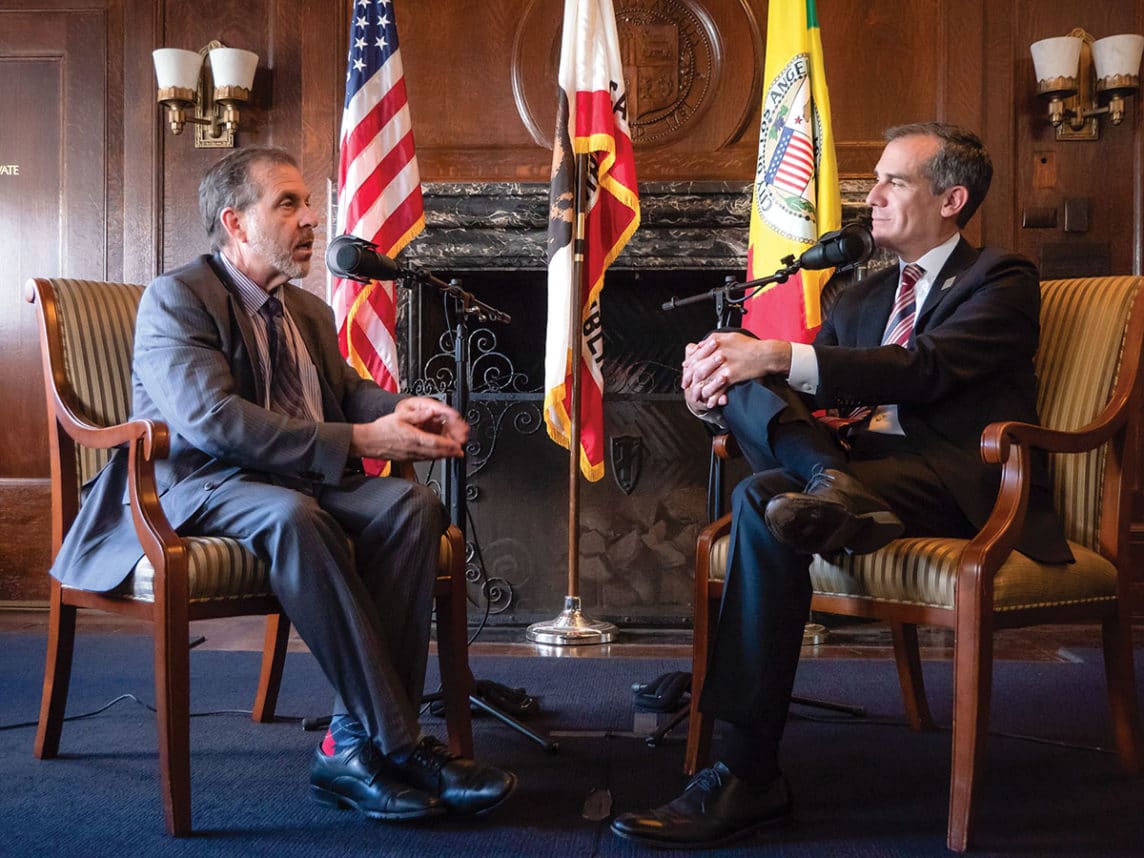
Nevertheless, he was at no loss to offer examples with the same energy, excitement and passion that must have been present when the projects were created. He cites the Ezra Network as a timely and relevant example of a social service program that helps individuals and families in need – especially in the wake of the ongoing pandemic.
“What does someone do when they suddenly lose their job?” Sanderson said. “What if both breadwinners lose their jobs? What happens if a family all of a sudden finds themselves in crisis?”
The reference was not only to the havoc caused by the pandemic, but also to the uncertainty of life itself. “I’ll tell you what they do,” Sanderson said, answering his own question. “They call their rabbi.”
In conjunction with Jewish Family Service of LA, Bet Tzedek Legal Services and Jewish Vocational Services SoCal (JVS), a team was put together to help the Jewish community access social workers, legal counselors, job counselors, mental health professionals and financial services, all at no cost. The Ezra Network is accessible through many entry points, including 21 synagogues from Orthodox to Reform.
When describing some of the lives that the Ezra Network has touched, Sanderson’s voice lowered as he cited an example. A wife lost her job, and her husband, a contractor, didn’t have the funds to renew his contractor’s license due to a downturn in his business. After they reached out for help, the professionals at the Ezra Network arranged for the wife to undergo career retraining, and the Federation paid for the husband’s license renewal.
“The idea is not to support someone forever,” Sanderson said. “It is to lend a hand and get people back on their feet so they can once again become self-sufficient.”
Eventually, the wife obtained employment in a new career and her husband relaunched his business. When things got back on track, they attended an Ezra Network event and described how the program was there for them.
“The wife then presented us with a check for $180, a small gesture, but it was important to them to show their gratitude,” Sanderson said. “It caught everybody off guard. It was a very touching moment.”
As Sanderson talked about how the Ezra Network works to ease trauma for families in L.A., he pivoted to discussing trauma on a mass scale, primarily in Israel.
“With Israelis facing constant attacks from rockets, a number of years ago we learned that Israel had no resources or framework to deal with trauma resilience,” Sanderson said. “That’s when we found and partnered with Talia Levanon, co-founder of the Israel Trauma Coalition. We are proud to be their partner in helping Israelis deal with trauma. But not just in Israel. They were in Las Vegas and Pittsburgh after the shootings. They were right here after the fires. They are the first place people call to deal with trauma.”
Levanon said that after the war in 2014, when most Federations were putting their energy into the south of Israel, “Jay understood the larger scenario. The L.A. Federation supported a process of strengthening the north of the country and Jerusalem to be prepared and able to respond.”
Albert Praw, the current Federation chair, offered the Community Security Initiative (CSI), which creates programs that provide security, monitoring and training for over 600 Jewish schools, synagogues and community organizations, as one of Sanderson’s prize achievements. “Federation has been able to execute on [this and many more] initiatives because Jay has recruited, trained and retained the best professional staff,” he said. “It has become the model for the entire Federation system.”
Coming full circle, Sanderson spoke with pride about The BAR Center at the Beach, the rebuilt and reimagined Israel Levin Senior Center on the Venice boardwalk. The BAR Center holds a special place in Sanderson’s heart because it is a mere four blocks from Tuum Est, his entry into the nonprofit, social service world. Named for lead donors Bennett and Allison Rosenthal and designed by Hagy Belzberg of Belzberg Architects, the $10 million BAR Center plans to offer programs and services that reach beyond seniors to engage the next generation of Jewish leadership. It’s scheduled to open its doors to programming in early 2022.

At the dinner event, Sanderson was filled with emotion and gratitude as he thanked his staff, partners, funders and the attendees, but most of all his mother, wife and children, Jonah and Isabelle. “People ask me what is my legacy? They are my legacy,” he said.
The outpouring of joy was momentarily tempered when Sanderson spoke of his brother, who passed away seven months ago. “When I stand on a stage, I never stand alone,” he said. “I stand with my brother, who never had a chance to live a full life.”
Sanderson’s developmentally disabled brother lived in a group home with three roommates, all of whom got COVID-19 — but Jeffrey didn’t. Although quarantined, he developed a severe infection and then he got COVID. In a few days, he was gone.
“I couldn’t get to the east coast fast enough, and even if I could, they wouldn’t let me in the hospital,” Sanderson said. “We couldn’t have a funeral, but we will have one as soon as we are able.”
“It seems as though we’re having a rough patch. But we’re strong and resilient. If we Jews are anything, we are resilient.” – Jay Sanderson
The biggest question of the evening was, what would Sanderson’s next chapter be? It’s clear he has no plans to retire. His Instagram account @jaysanderson_la describes him as a chef, mixologist (someone who has a rich appreciation of the ingredients and techniques used to create innovative cocktails), somm (short for the French sommelier, a wine connoisseur), storyteller, Federation exec and world traveler.
While the night belonged to Sanderson, he had some words for the Rabbi Farkas, the incoming president and CEO, whom he addressed from the stage.
“I have had the honor of doing this job,” he said. “It is now your honor, and with honor comes responsibility. But look around this room. And there are many, many more people who couldn’t be here tonight. This is a strong Jewish community [with] great rabbis, great lay leaders, great everything. Every box gets checked in Los Angeles.”
When his appointment was announced in June, Farkas told the Journal, “I am overwhelmed with gratitude to have been selected as the next president and CEO of The Jewish Federation of Greater Los Angeles. The Federation is uniquely positioned to foster a flourishing Jewish community and it is a gift to have been asked to serve. I look forward to many years together moving boldly into a future that is both dynamic and caring, but is most of all filled with a spirit of cooperation.”

(Photo by Howard Pasamanick Photography)
Sanderson ended his 15-minute speech with the wisdom that so many have come to appreciate from the soon-to-be former head of the Federation.
“It seems as though we’re having a rough patch,” he said. “Young people are feeling confused about what it means to be Jewish. So many Jews feel disenfranchised and disconnected. There are so many among us that don’t feel the warm embrace of a Jewish community. Israel is not looked upon the way that I see it. Not perfect, but perfect for me. But we’re strong and resilient. If we Jews are anything, we are resilient.”
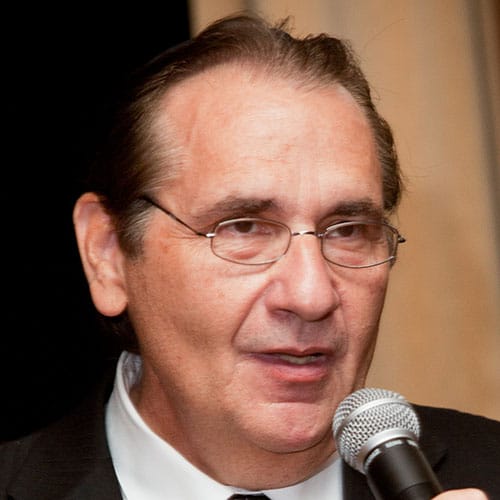







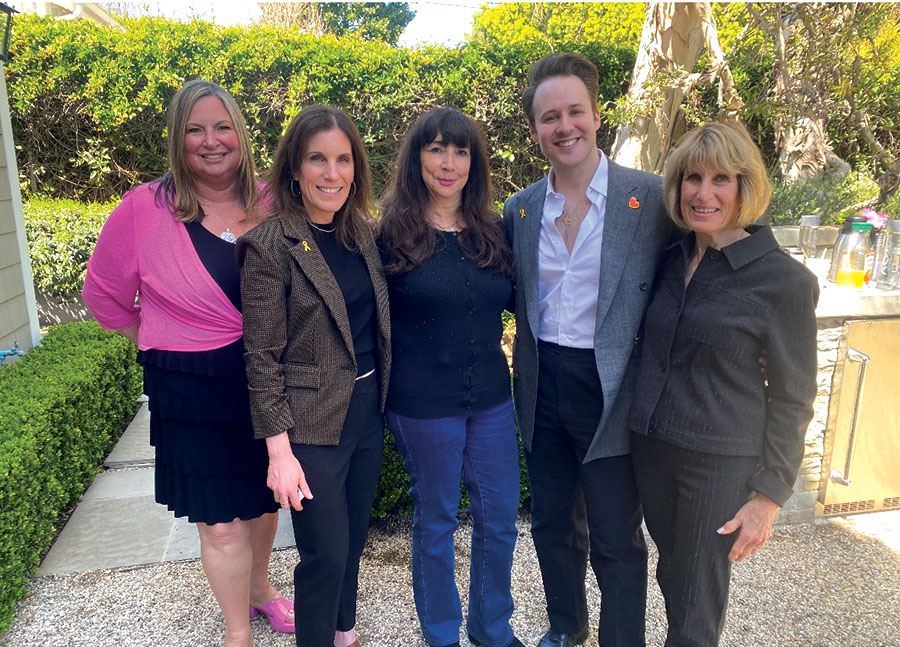


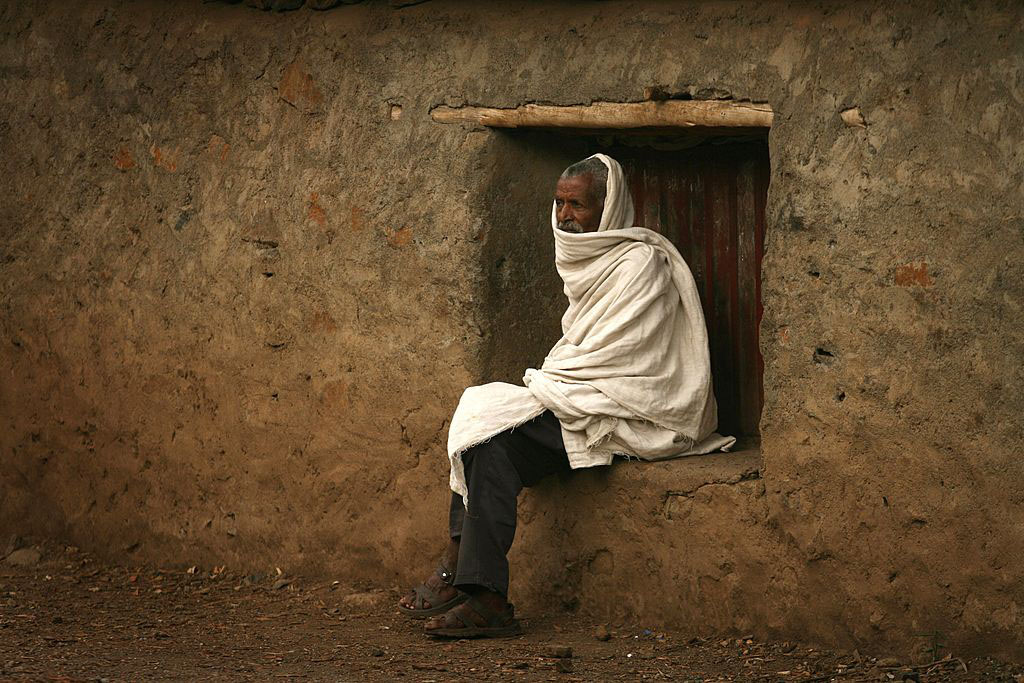

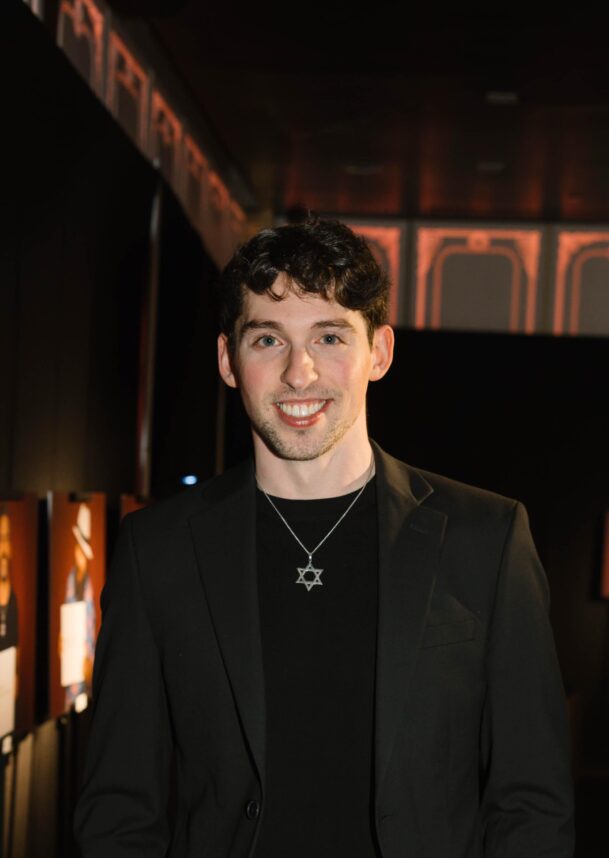
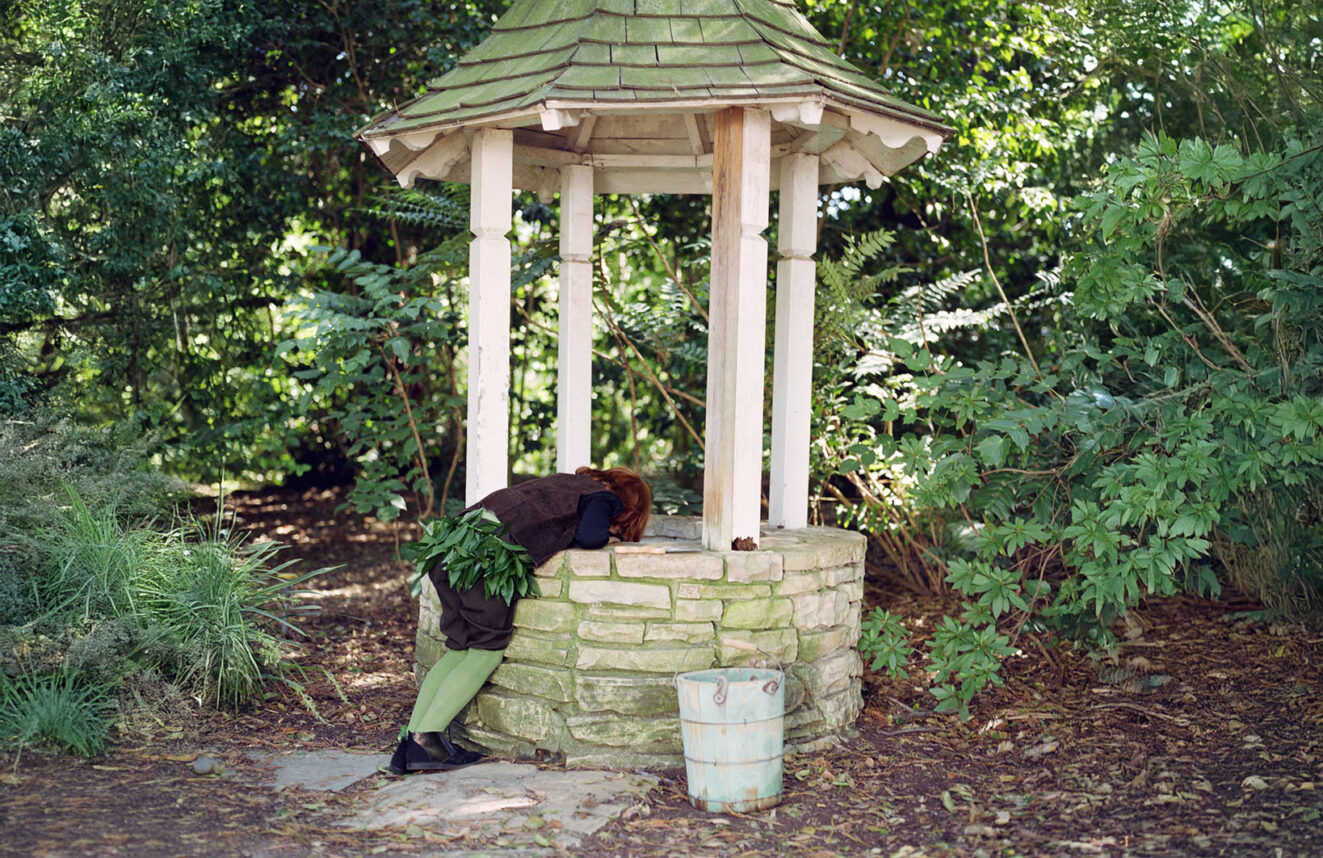
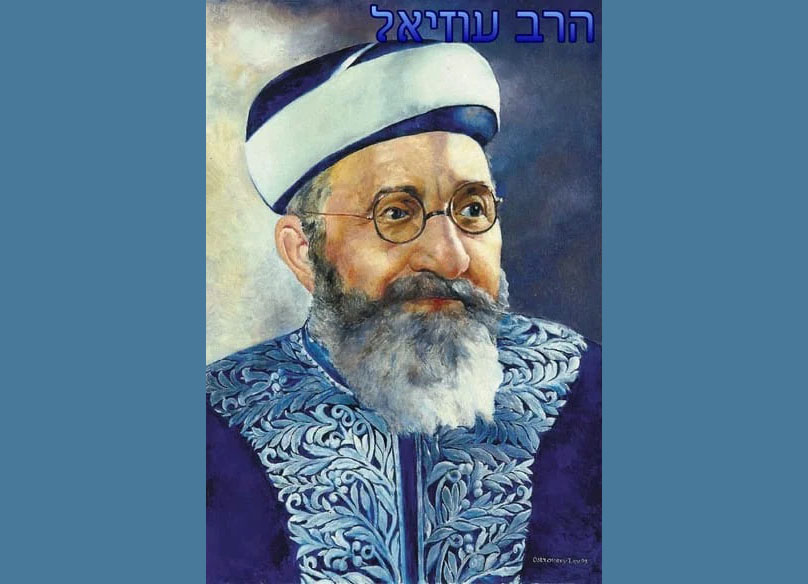



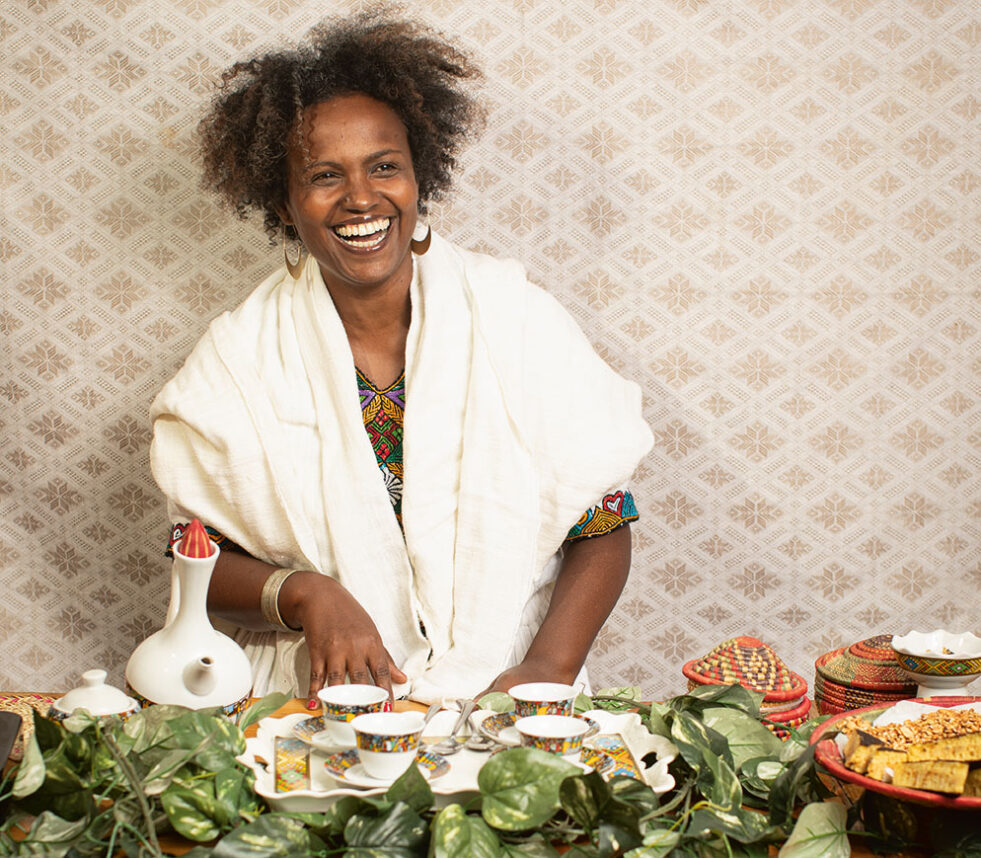
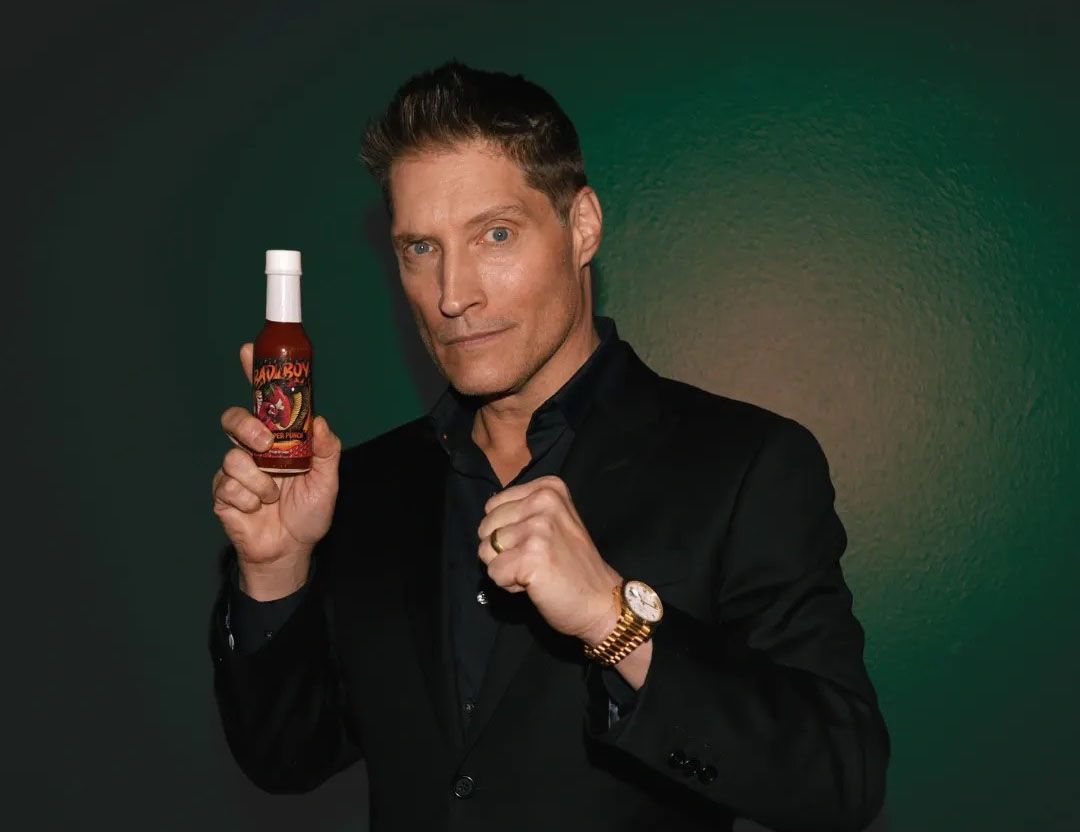

 More news and opinions than at a Shabbat dinner, right in your inbox.
More news and opinions than at a Shabbat dinner, right in your inbox.